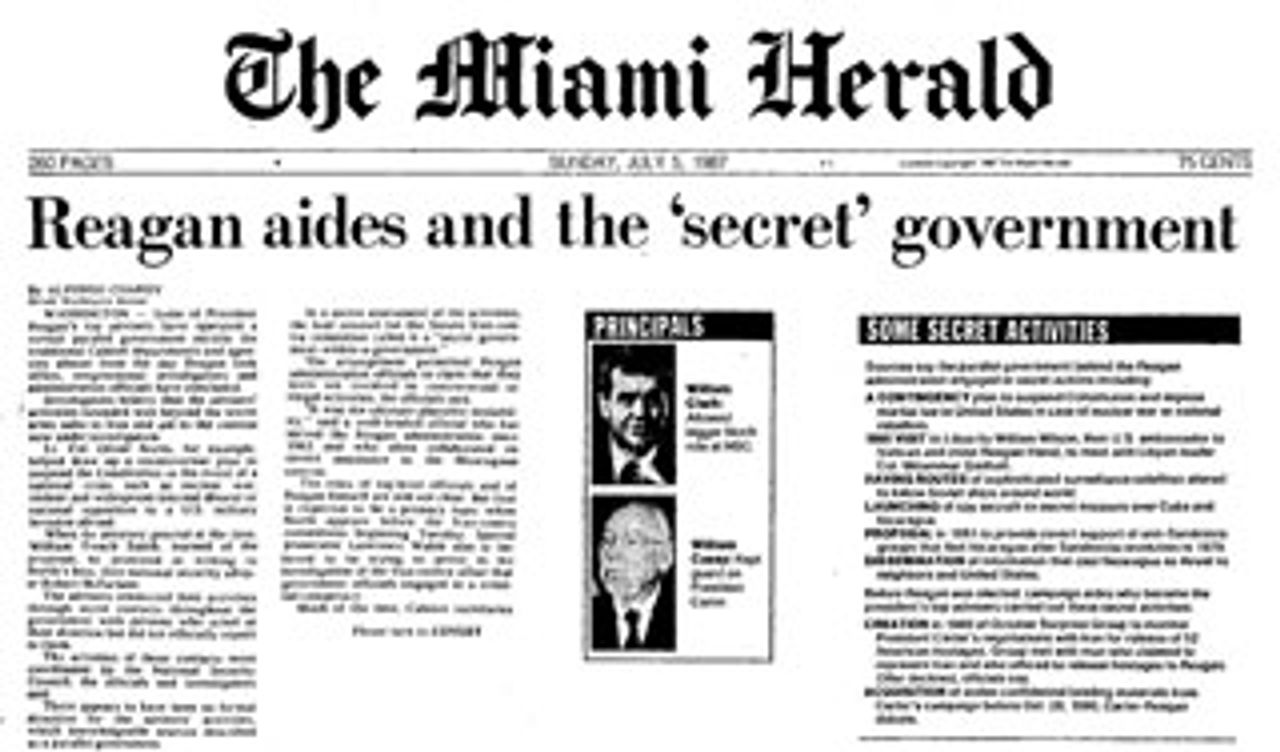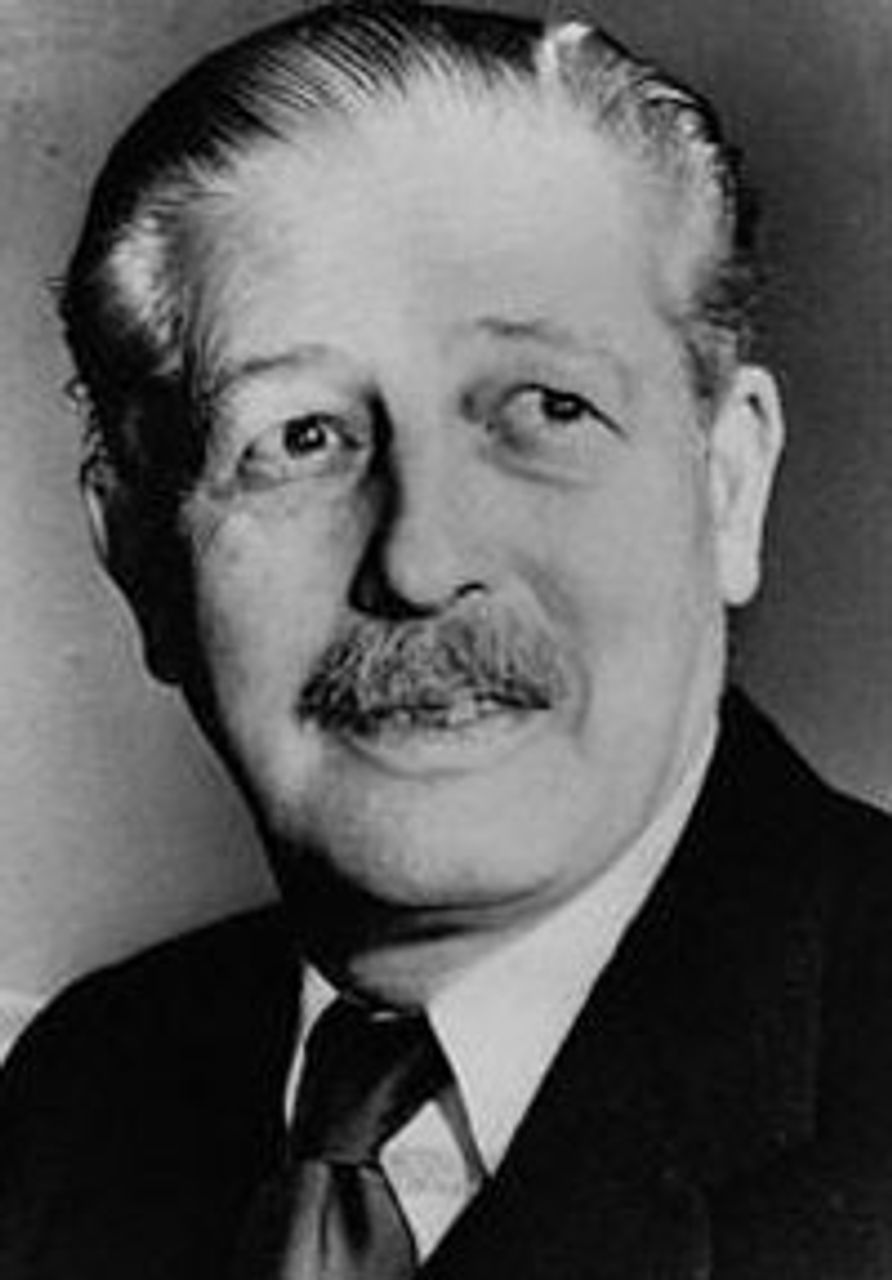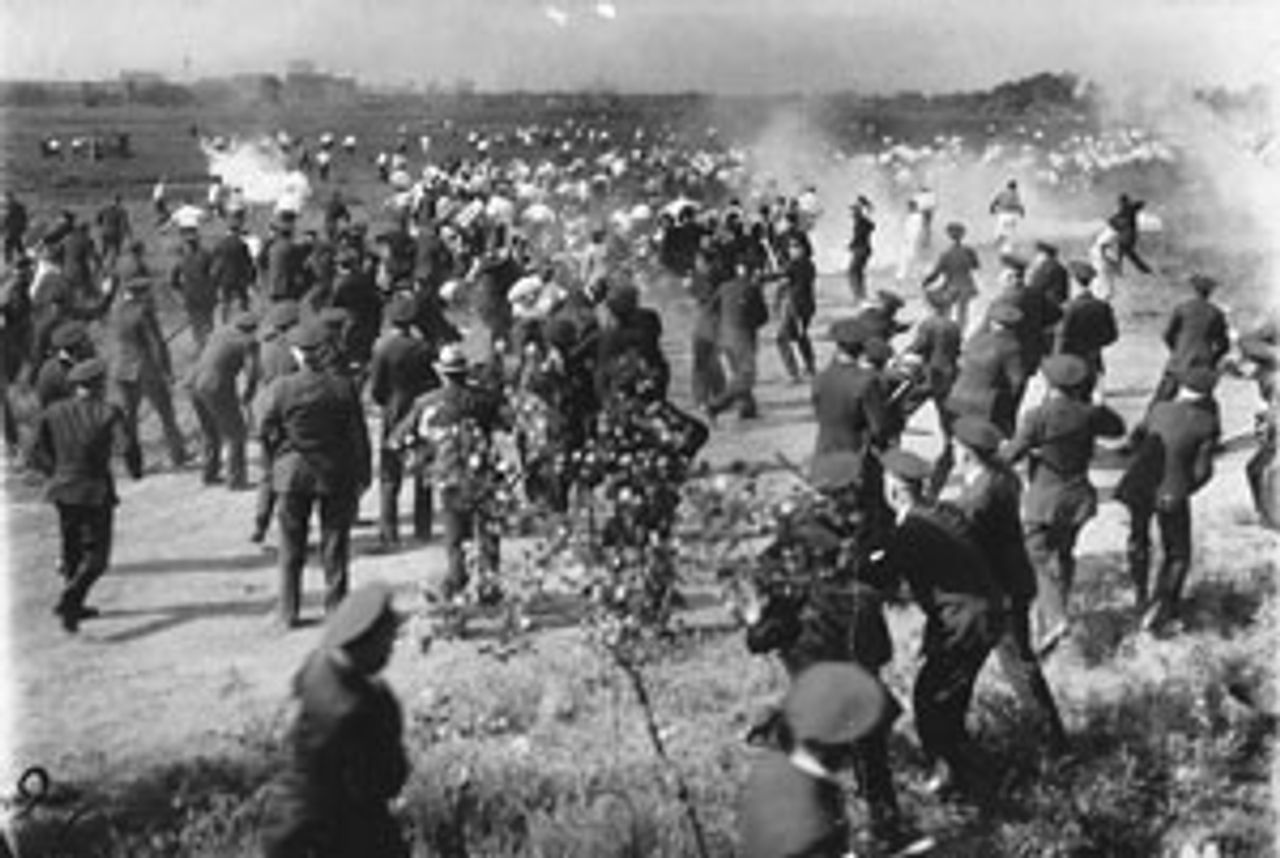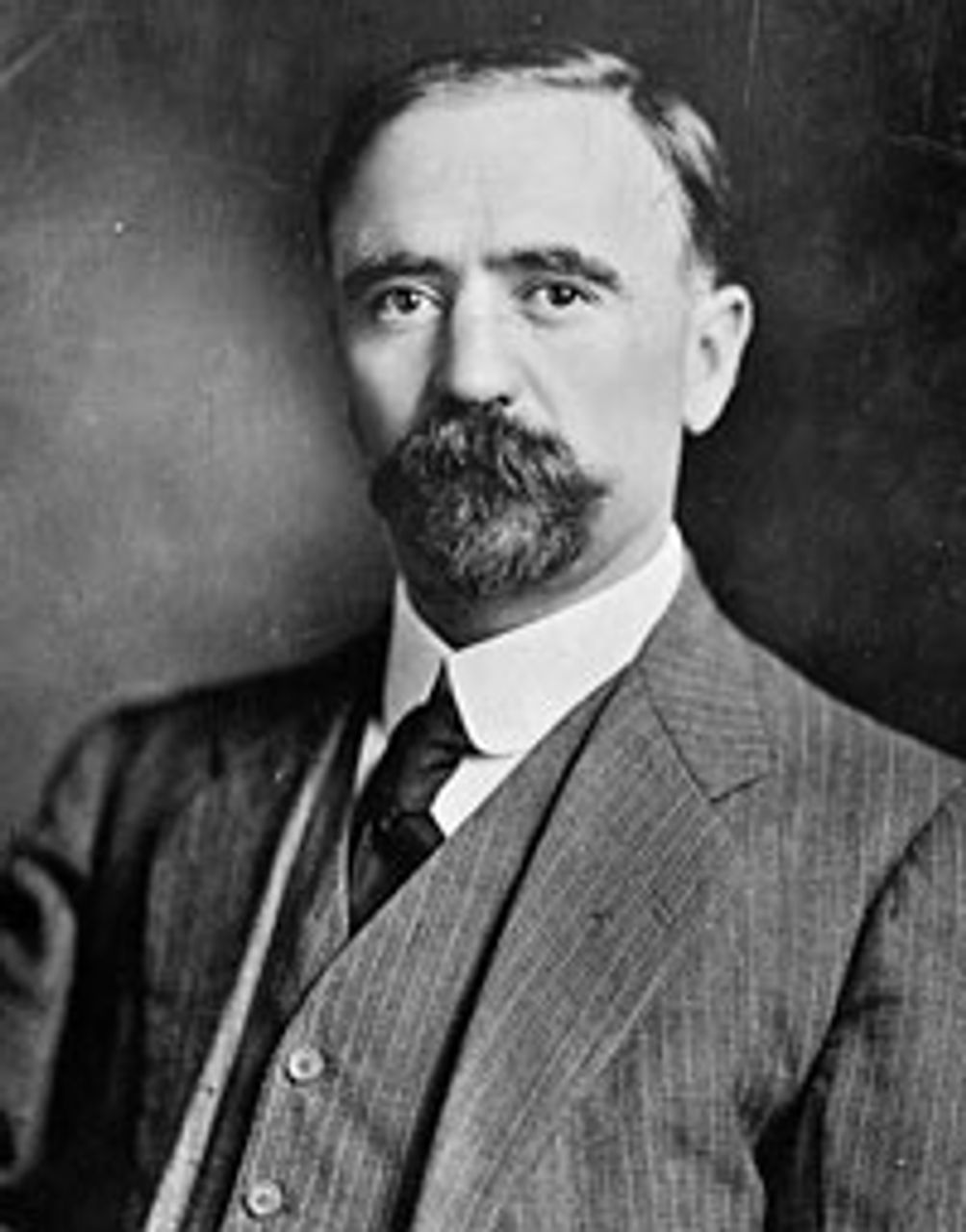This Week in History provides brief synopses of important historical events whose anniversaries fall this week.
25 Years Ago | 50 Years Ago | 75 Years Ago | 100 Years Ago
25 years ago: Iran-Contra committee covers up plans for US military rule
 The Miami Herald from July 5, 1987
The Miami Herald from July 5, 1987 On Monday, July 13, 1987 during the 27th day of the nationally televised Iran-Contra hearings, Congressman Jack Brooks of Texas asked Lt. Col. Oliver North this question: “Colonel North, in your work at the NSC [National Security Council] were you not assigned, at one time, to work on plans for the continuity of government in the event of a major disaster?”
North sat bolt upright and folded his arms belligerently as his attorney, Brendan Sullivan, agitatedly prompted Chairman Daniel Inouye to intervene, who nervously addressed Brooks: “I believe that question touches upon a highly sensitive and classified area so may I request that you not touch upon that?”
Brooks, addressing the chairman, then said, “I was particularly concerned, Mr. Chairman, because I read in Miami papers, and several others, that there had been a plan developed, by that same agency, a contingency plan in the event of emergency, that would suspend the American constitution. And I was deeply concerned about it and wondered if that was an area in which he had worked. I believe that it was and I wanted to get his confirmation.”
Several members of the committee became visibly anxious. Inouye again responded, “May I most respectfully request that that matter not be touched upon at this stage. If we wish to get into this, I'm certain arrangements can be made for an executive session.”
The article Brooks referred to was published in the Sunday Miami Herald on July 5, called “Reagan aides and the ‘secret’ government,” by Alfonso Chardy. It documented the existence of a “parallel government behind the Reagan administration engaged in secret actions including ... a contingency plan to suspend the Constitution and impose martial law in United States in case of nuclear war or national rebellion.”
The “shadow government’s” secret plan, which included measures for rounding up hundreds of thousands, if not millions, of political opponents and immigrants, was known as “REX84” or “Garden Plot” and was drawn up by Col. North. The video of the exchange in the Iran-Contra session can be found on YouTube or on the C-SPAN web site.
50 years ago: Macmillan sacks seven British ministers
 Harold Macmillan
Harold MacmillanOn July 13, 1962, UK’s Tory Prime Minister, Harold Macmillan, dismissed seven ministers from his Cabinet, including Lord Chancellor Kilmuir and Selwyn Lloyd, Chancellor of the Exchequer. The British media sensationalized the episode as the “The Night of the Long Knives,” a reference to the bloody coup within the Nazi Party in 1934.
Also dismissed were Conservative Party ministers David Eccles, Minister of Education; Harold Watkinson, Minister of Defense; and Lord Mills, Minister without Portfolio; and National Liberal ministers John Scott Maclay, Secretary of State for Scotland; and Charles Hill Minister of Housing and Local Government and Welsh Affairs. These dismissals spelled the end of the National Liberals as significant party; they would merge with the Conservative and National Union parties in 1968. Promoted were Conservatives Reginald Maulding, from Colonial Secretary to Chancellor of the Exchequer, and R.A. Butler from Home Secretary to First Secretary of State.
The trigger for the shake-up had been the Conservatives’ third place showing, behind Labour and the Liberals, in a Leicester by-election held a day earlier. In the longer term it signaled a growing popular discontent with Britain’s relative economic stagnation, in spite of Macmillan’s claim to the population four years earlier that “you’ve never had it so good.” Macmillan’s economic policy had recently been derailed by France blocking UK entry into the European Common Market.
75 years ago: Four more workers killed in “Little Steel” strike
 Memorial Day Massacre, Chicago, 1937
Memorial Day Massacre, Chicago, 1937 Police and company violence claimed the lives of four more workers during the “Little Steel” strike during this week in 1937. On July 9 in Alcoa, Tennessee, at the Aluminum Company of America, two workers were killed by police and company thugs. A further 19 were seriously injured during clashes.
Just three days later, on July 12, two workers were murdered in cold blood when company guards fired into the massed ranks of workers outside the Republic steel plant in Massillon, Ohio. Twelve workers were seriously injured in the subsequent violent clashes between strikers and their supporters, and on the other, the police and company goons. After firing upon the workers the police followed up with tear gas rounds and repeated clubbing of heads.
While the National Labor Relations Act (the Wagner Act) had just been upheld as constitutional by the Supreme Court, the law proved to be completely toothless in the face of employer intransigence. Proceedings against arbitrary firings and other repressive actions dragged on before the NLRB for several years.
Politically, President Franklin D. Roosevelt’s declaration of “a plague on both your houses” in relation to the Little Steel strike amounted to tacit White House endorsement of the massive violence organized by the steel bosses. State and local police were mobilized to smash picket lines and back strikebreaking.
The steel employers utilized their enormous economic power to finance a propaganda campaign in newspapers to demonize the striking workers and to lay all the blame for the picket line violence at feet of the workers.
100 years ago: Americans driven out of Mexico during revolution
 Francisco Madera
Francisco MaderaAnti-government rebels marched into an American Mormon colony in Mexico July 12, 1912, giving the inhabitants 24 hours to surrender all their weapons. Hostility to US influence was a major component of the mass revolutionary movement that erupted in 1911 against the longstanding rule of dictator Porfirio Diaz.
By the time of Diaz’s ouster, 22 percent of Mexico’s land area owned by American investors or “pioneers.” Power in Mexico was concentrated in the small group of metropolitan and foreign investors. William Randolph Hearst alone owned between 6,600,000 and 7,500,000 acres in Sonora, Tehuantepec, Chihuahua as well as other properties.
Diaz was forced into exile and replaced by liberal Francisco Madero, who won election as president in November 1911, but formed a right-wing cabinet excluded the more radical forces based in the peasantry and the agrarian working class. Soon after, direct attacks on the big landowners resumed, including those directed against American-owned property.
The month of July 1912 ended with hundreds of American settlers fleeing from Chihuahua to El Paso. Among those in the exodus was the family of George Romney (then five years old), the future governor of Michigan and father of Republican presidential candidate Mitt Romney.
Washington demanded that Madero crush the rebellion in Chihuahua, and US Secretary of War Frank Knox issued a warning regarding raids on US property. Pascual Orozco, the co-leader with Pancho Villa of the northern-based revolutionary armies, responded, “We intend to disarm every foreigner living in the zones dominated by the revolutionary party, if it will enable us to gain the means to unseat Madero.”
The US efforts to suppress or contain the Mexican Revolution culminated in the landing of US troops at the port city of Veracruz in 1914.
